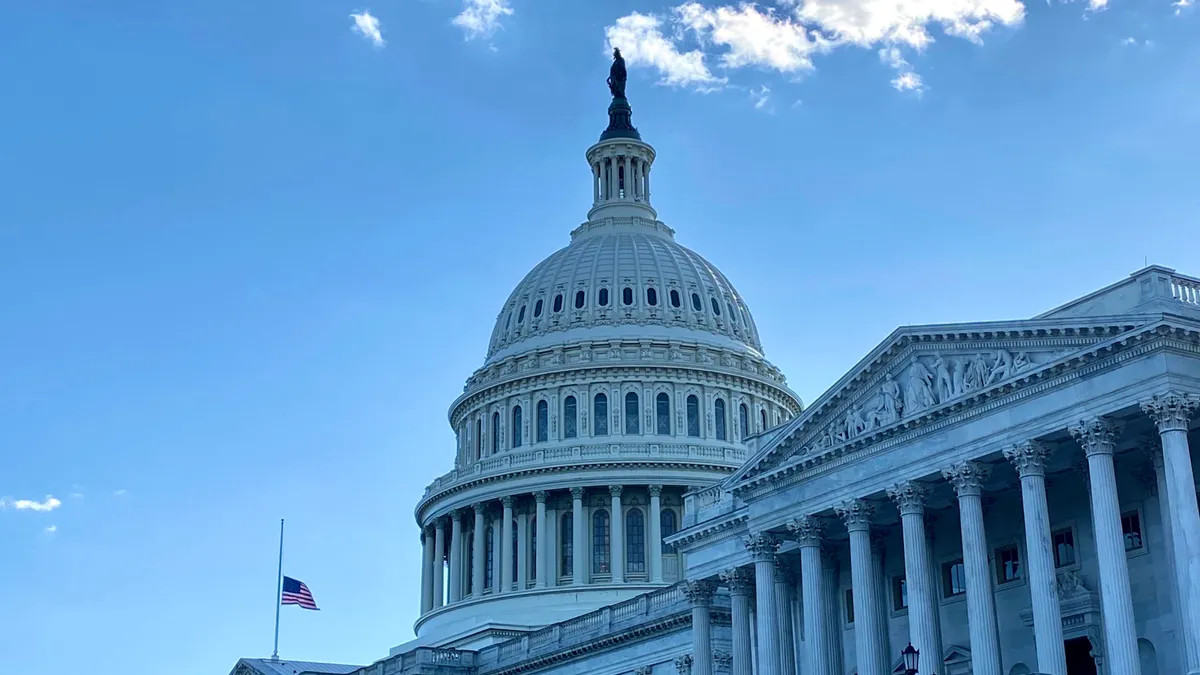Dive Brief:
- Federal relief money, particularly the American Rescue Plan's direct funds to cities, has been transformative in buoying cities' economic outlooks, according to research the National League of Cities (NLC) shared Tuesday in its 2021 City Fiscal Conditions report.
- Approximately two-thirds of city finance officers who responded to a NLC survey this summer reported being better able to meet financial needs in fiscal year 2021 than they could in the prior year. In comparison, in last year's survey, about 80% of city finance officers said they were less able to meet financial needs than in FY19.
- Given that many cities are using rescue funds to cover lost revenues and avoid future budget cuts, leaders are still anxiously awaiting support from a federal infrastructure package to put toward key projects. About half of officials from the over 440 cities with populations greater than 10,000 that were surveyed indicated that infrastructure needs are the greatest sticking point in balancing FY21 budgets.
Dive Insight:
U.S. cities' general funds had finally recovered from Great Recession losses in 2019 before facing revenue losses again in FY20. But federal programs — namely 2020's Coronavirus Aid, Relief, and Economic Security (CARES) Act and this year's American Rescue Plan Act (ARPA), as well as small business loans and homeowner protections — have proven effective in aiding recovery and helping cities have more optimistic economic outlooks going forward, explained NLC Research Director Christiana McFarland during a virtual presentation of the results.
"Although these losses were significant and on par with what we observed at the start of other recessions, these losses pale in comparison to what could have been without federal intervention," she said.
Key economic and policy changes between the time of the Great Recession and the pandemic shocks supported different outcomes and recoveries, the report states. "The combination of a strong real estate market, a landmark court decision allowing cities to collect online sales taxes and federal support, offset by other changes in the economic base of cities, led to decline in revenues in FY 2020 and a projected decline in FY 2021, but by less than they would have experienced had the pandemic taken place just a decade ago," the report states.
More specifically, during the pandemic, while city revenues from retail taxes fell, and income or wage tax revenue declined due to greater unemployment, other tax revenues were more resilient. A 2018 Supreme Court decision paved the way for cities to collect sales tax from certain online purchases, allowing cities to tap into the pandemic's e-commerce boom. In addition, burgeoning real estate markets across the U.S. boosted real estate taxes and, ultimately, property taxes.
Still, differences in tax revenues from city to city in some cases led to very different economic outlooks this year and different approaches to spending rescue funds. According to NLC, cities' revenue changes most years are expected to fall within plus or minus two percentage points of the average. In FY21, 81% of cities fell outside of this range, with 18% budgeting for greater than 5% growth, and 29% budgeting for greater than 5% decline.
Some city finance officials spoke more during Tuesday's event about how their governments continue to map out ARPA spending.
Cincinnati Budget Director Andrew Dudas said the Ohio city has put about three-quarters of the ARPA funds it has already received toward "fiscal stability" purposes, largely revenue replacement, to avoid making deep cuts in FY22. It plans to use the remaining funds to support sectors particularly hard hit by the pandemic, including restaurants and the performing arts, and for initiatives related to violence prevention and medical care enhancements.
Philadelphia, in contrast, intends to use 100% of its ARPA funds on revenue replacement. "Unfortunately, it's new money for old stuff, said Marisa Waxman, the city's budget director, which is "a little unsatisfying to the public." Despite the city having a host of new needs, existing operations started to cost more; with residents staying home, people started to use certain services more, Waxman said. One example is waste and recycling, given all the packaging from e-commerce orders.
City officials also responded to critics who question the need for so much federal support on infrastructure given the cash infusion cities received from ARPA. Waxman said that the ARPA dollars are "more backfill, whereas the infrastructure dollars are gonna let us stretch and think beyond what we thought was possible up until now."












